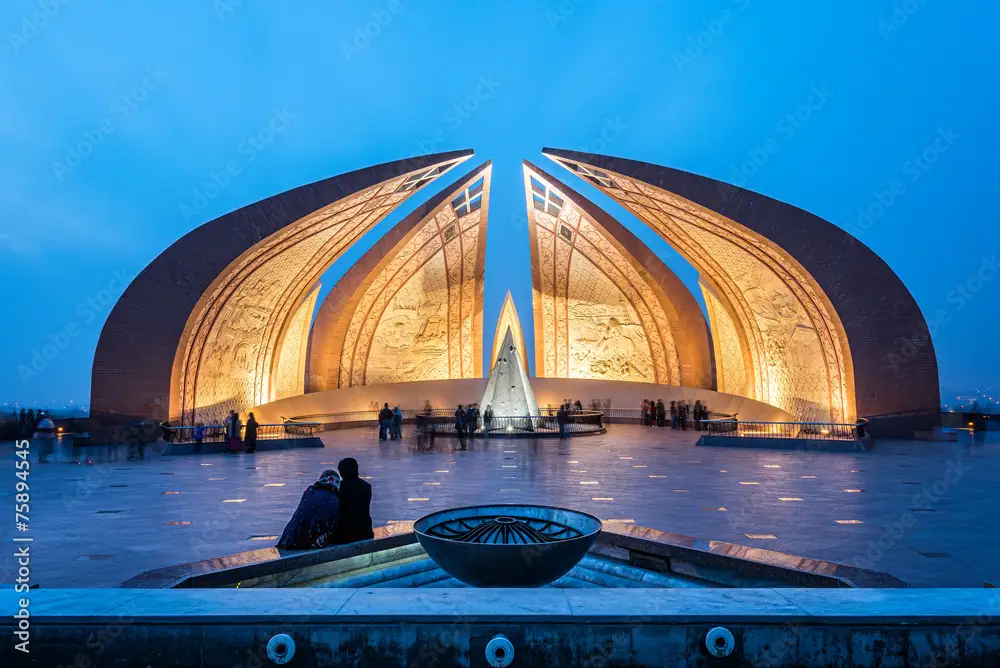Islamabad, the capital of Pakistan, is renowned for its stunning architecture and thoughtful urban planning. But have you ever wondered who designed this beautiful city? The answer lies in the visionary work of a brilliant architect whose influence has shaped the modern face of Islamabad. This blog will explore the architect behind Islamabad, the city’s master plan, and the legacy that inspires urban planning in Pakistan.
The Vision Behind Islamabad
After Pakistan gained independence in 1947, a pressing need for a new capital was needed. Karachi, the initial capital, was overcrowded and needed more infrastructure for a government hub. Thus, the idea of a new capital city, Islamabad, was born. The government wanted a city that could symbolize progress and development while providing a serene environment for its residents.
To achieve this vision, the government turned to Constantinos Doxiadis, a renowned Greek architect and urban planner. Doxiadis had already made a name for himself with innovative urban planning ideas. They were seen as the perfect person to bring Islamabad to life.
The Mastermind: Constantinos Doxiadis
Constantinos Doxiadis, born in 1913, was influential in architecture and urban planning. His work spanned continents, and his expertise was sought after for numerous large-scale projects. Doxiadis’ approach to urban planning was revolutionary, focusing on the harmonious integration of human settlements with their natural surroundings.
Doxiadis was chosen to design Islamabad because of his visionary ideas and ability to create functional yet beautiful urban landscapes. His concept for Islamabad was based on the principles of Ekistics, the science of human settlements. This approach aimed to create a city that could grow and evolve while maintaining a high quality of life for its inhabitants.

Master Planning of Islamabad
Doxiadis’ master plan for Islamabad was a meticulous blend of modernist architecture and practical urban planning. The city was divided into different sectors, each with specific functions, ensuring a balanced distribution of residential, commercial, and government areas. This zoning system helped to organize the city efficiently and prevent overcrowding.
The master plan included a grid layout for residential areas, ensuring every sector had access to essential services like schools, markets, and parks. The commercial zones were strategically placed to serve the surrounding residential areas, making it convenient for residents to access shopping and entertainment facilities. Government buildings were positioned centrally to facilitate easy access and communication.
Architectural Firms Involved
While Doxiadis was the chief architect, several other architectural firms contributed to the development of Islamabad. These firms worked on various aspects of the city’s construction, bringing their expertise. Local firms in Islamabad and international partners collaborated to execute Doxiadis’ vision.
These collaborations were crucial in ensuring that the architectural standards were met and that the city developed according to the master plan. The involvement of multiple firms also brought in diverse design perspectives, enriching Islamabad’s architectural landscape.
Modern Architecture and Urban Development
Islamabad’s architecture is a testament to modernist principles. The city’s buildings are characterized by their clean lines, functional design, and use of modern materials. This modernist approach ensured that the city not only looked contemporary but also met the practical needs of its residents.
Key architectural projects in Islamabad, such as the Pakistan National Monument and various government buildings, showcase the blend of modern design and cultural heritage. These landmarks symbolize Islamabad’s identity and reflect the city’s growth and development.
Notable Designs and Landmarks
One of Islamabad’s most iconic landmarks is the Pakistan National Monument, designed to represent the four provinces of Pakistan. This monument perfectly exemplifies how architecture can symbolize national unity and pride.
Other notable designs include the Faisal Mosque, which, although not designed by Doxiadis, complements the city’s architectural aesthetic. These landmarks, along with many others, highlight the contributions of various architects and their role in shaping Islamabad’s skyline.
3D Design and Conceptual Drawings
Doxiadis and his team used advanced techniques, such as 3D design and conceptual architecture drawings, to visualize the city’s layout and structure. These tools were essential in refining the design and ensuring every detail was accounted for.
The 3D design allowed for a more accurate representation of how the city would look and function. This attention to detail helped in creating a city that was not only beautiful but also highly functional.
Architectural Design Services in Islamabad
Today, many architectural firms in Islamabad offer various design and construction services. These firms continue to build on Doxiadis’ legacy, incorporating modern technology and innovative design practices. Services include interior design, master planning, and exclusive design-based services catering to residential and commercial projects.
Legacy of Islamabad's Design
Constantinos Doxiadis’ work on Islamabad has left a lasting legacy. His urban planning principles continue to influence city planning in Pakistan and beyond. The city’s design has set a benchmark for creating functional, sustainable, and aesthetically pleasing urban spaces.
Doxiadis’ legacy is visible in how Islamabad has grown and evolved while maintaining its original charm and functionality. His work inspires future generations of architects and urban planners.
Conclusion
Constantinos Doxiadis, the visionary Greek architect, played a pivotal role in designing Islamabad, the capital of Pakistan. His master plan and innovative approach to urban planning have made Islamabad a model city, blending modern architecture with functional design. The city’s development and beautiful landmarks testify to his expertise and vision.
- Phone: +92 3015161981
- Email: info@oddisodd.com
FAQS
Who created Islamabad?
Islamabad was created under the vision and direction of Constantinos Apostolou Doxiadis, who designed the city’s master plan.
Who was the town planner of Islamabad?
Constantinos Apostolou Doxiadis was the principal town planner of Islamabad, responsible for its layout and design.
Who is the Golden Man of Islamabad?
The “Golden Man of Islamabad” refers to Ayub Khan, the then-President of Pakistan, who commissioned the creation of Islamabad as the new capital.
Who gave the master plan of Islamabad?
The master plan of Islamabad was given by Constantinos Apostolou Doxiadis, a renowned Greek architect and urban planner.
Who designed the Islamabad Monument?
The Islamabad Monument was designed by Arif Masood, a prominent Pakistani architect.




Comments are closed